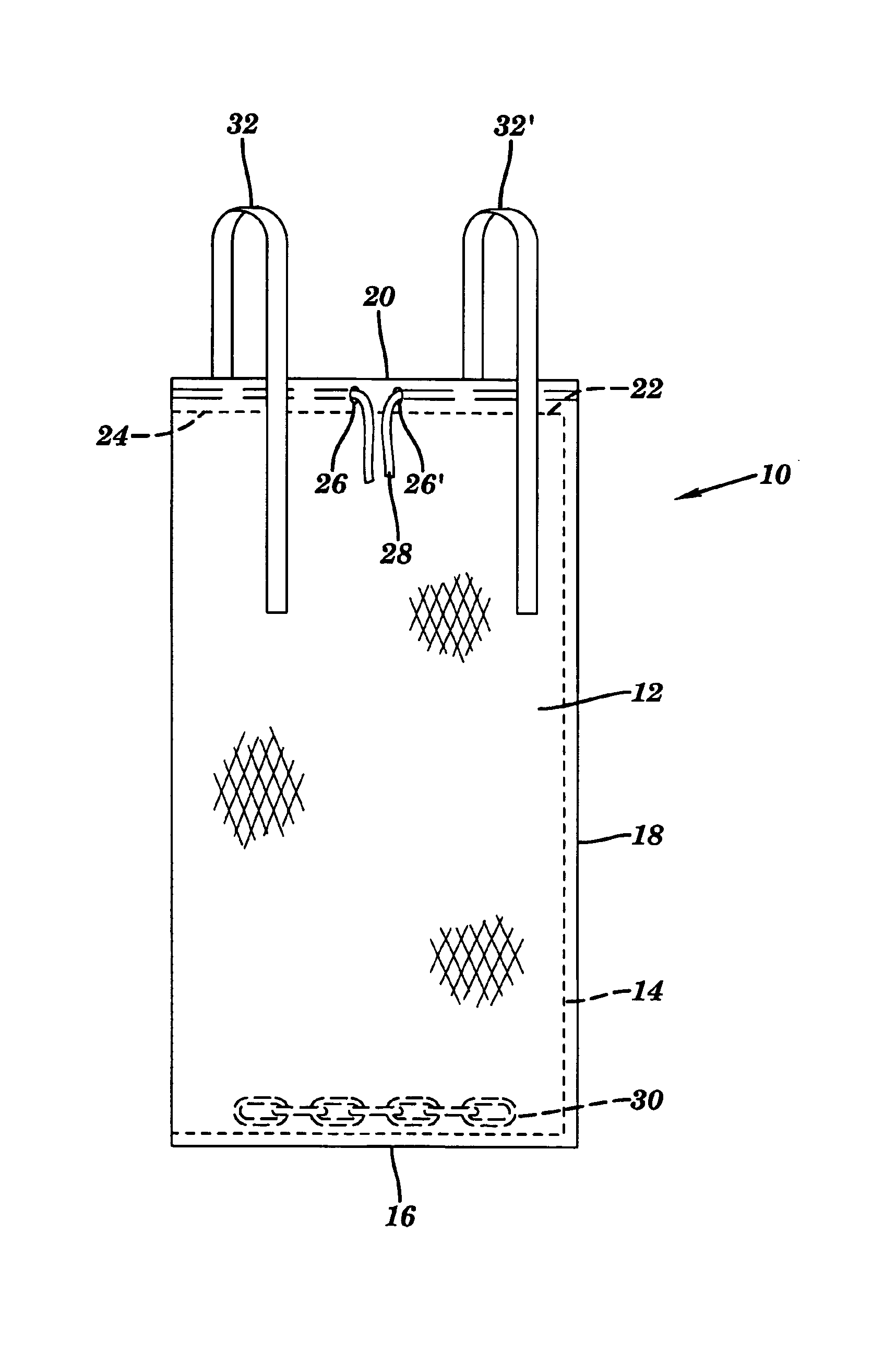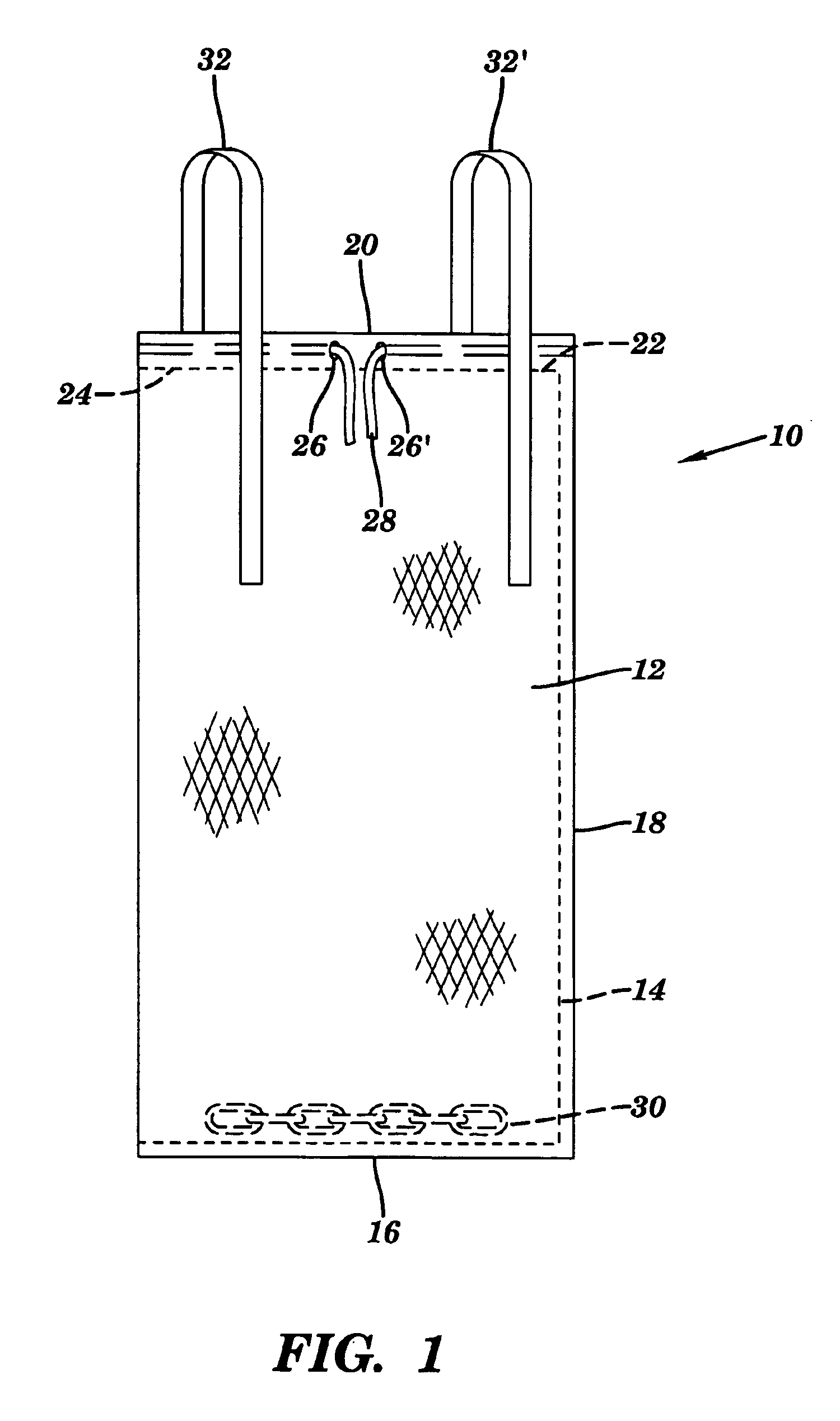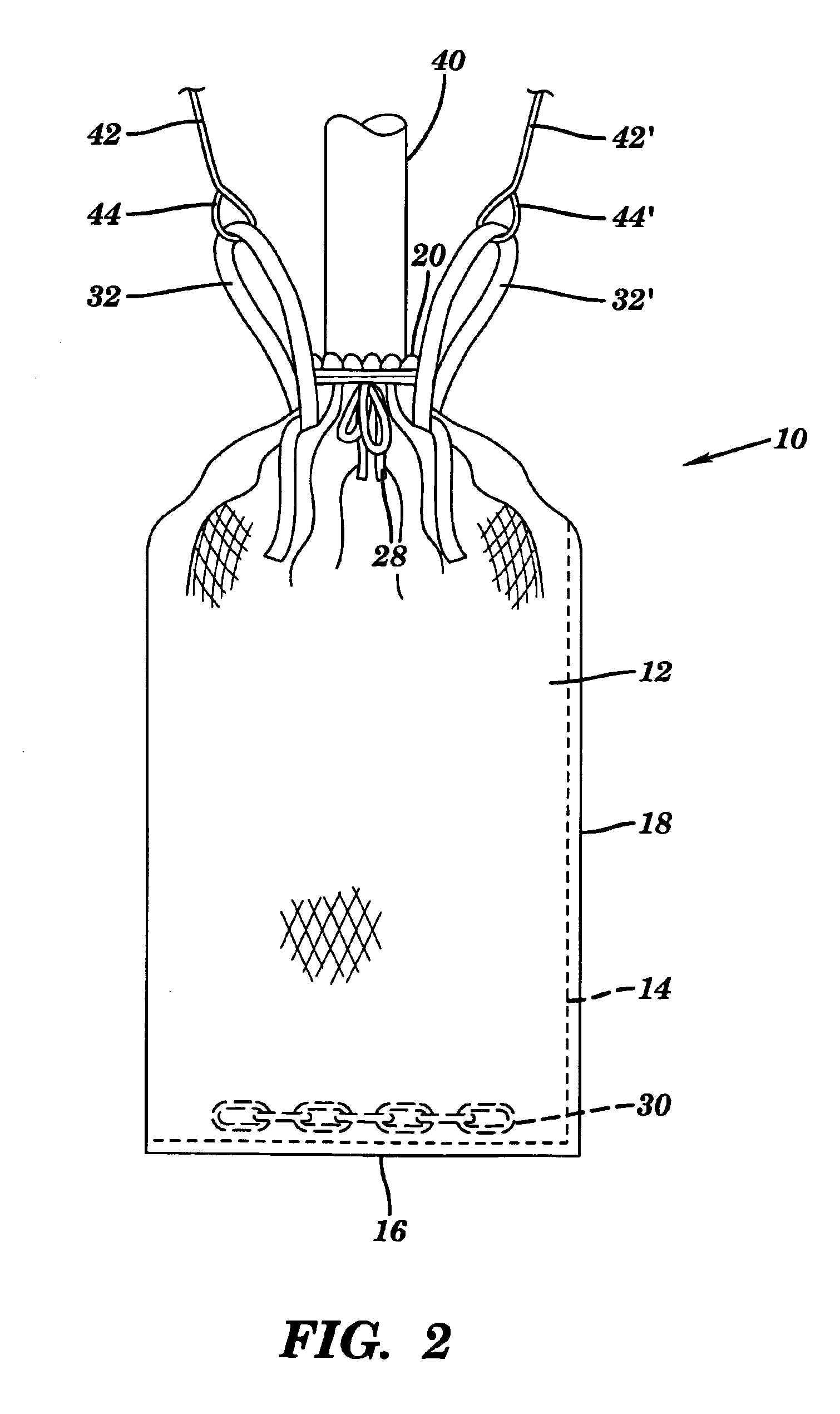Attachment for use with stockpiling barge and method of filtering runoff water therefrom
a technology of runoff water and attachment, which is applied in the direction of waterborne vessels, constructions, sludge treatment, etc., can solve the problems of inability to contain such barriers, significant harm to the aquatic environment, and stockpiling barges, so as to facilitate a substantial reduction in turbidity and reduce environmental harm , the effect of reducing turbidity
- Summary
- Abstract
- Description
- Claims
- Application Information
AI Technical Summary
Benefits of technology
Problems solved by technology
Method used
Image
Examples
first embodiment
Referring now to FIGS. 1 and 2, an attachment 10 according to the present invention is illustrated. The attachment 10 includes a fluid pervious bag 12 that is formed of a geosynthetic material of the type described above. The bag 12 is constructed by folding a rectangular sheet onto itself and simply preparing a sewn seam 14 along one end 16 (forming the closed end) and the lengthwise side 18. At the open end 20, a channel 22 is formed by an annular sewn seam 24. Using either a single opening or, as shown, a pair of openings 26,26′, a cord 28 is provided within channel 22 such that its ends extend respectively from the openings 26,26′. The attachment 10 also includes a ballast 30 (in the form of a length of chain) that is shown resting in the fluid pervious bag 12 at its closed end 16, and a pair of straps 32,32′ that are connected to the geosynthetic material via a sewn connection.
In use, shown in FIG. 2, the attachment 10 is connected to the end of a drainage hose 40. With its ope...
second embodiment
Referring now to FIG. 3, an attachment 50 according to the present invention is illustrated. The attachment 50 includes a fluid pervious bag 52 that is formed of a geosynthetic material of the type described above. The bag 52 has a closed end 56 and an open end 60, with the bag being tapered from approximately its midpoint toward its open end 60. By tapering the bag 52, it is possible to equip the bag with an open end 60 that is sized and configured to receive a discharge hose with little excess material. The bag 52 is constructed, for example, by joining together two similarly shaped pieces of geosynthetic material along sewn seams 54 about its entire perimeter except for its open end 60.
At is closed end 56, the bag 52 is provided with a tab or flap of material 61, formed by a seam 58, that includes a pair of grommets 63 that pass therethrough. The attachment 50 also includes a ballast 70 (in the form of a length of chain) that is connected to the bag 52 by connectors 71 of the typ...
PUM
| Property | Measurement | Unit |
|---|---|---|
| pore size | aaaaa | aaaaa |
| pore size | aaaaa | aaaaa |
| pore size | aaaaa | aaaaa |
Abstract
Description
Claims
Application Information
 Login to View More
Login to View More - R&D
- Intellectual Property
- Life Sciences
- Materials
- Tech Scout
- Unparalleled Data Quality
- Higher Quality Content
- 60% Fewer Hallucinations
Browse by: Latest US Patents, China's latest patents, Technical Efficacy Thesaurus, Application Domain, Technology Topic, Popular Technical Reports.
© 2025 PatSnap. All rights reserved.Legal|Privacy policy|Modern Slavery Act Transparency Statement|Sitemap|About US| Contact US: help@patsnap.com



